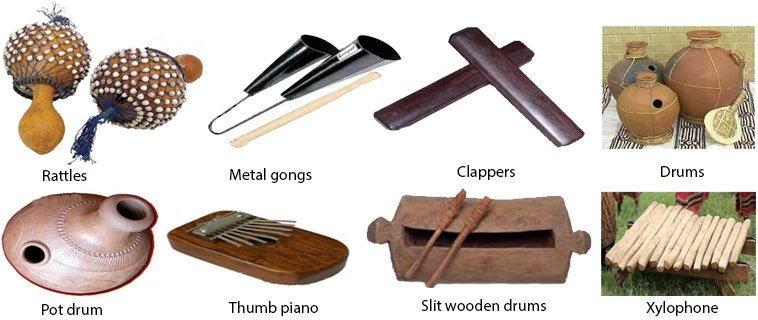Traditional Music Instruments as Artistic Inspiration in West Africa
The rhythmic heartbeats of West Africa resonate through the melodies of its traditional musical instruments. For centuries, these instruments have not only created enchanting musical compositions but also served as profound sources of artistic inspiration. In this captivating journey, we delve into the world of traditional West African music instruments, exploring how they have ignited the flames of creativity, influencing visual arts, literature, and modern interpretations.
Instruments and Artistry
Traditional West African music instruments aren't just tools of sound but also vessels of visual and cultural significance. From the melodious kora to the enchanting balafon, each instrument is adorned with intricate designs and carvings that tell stories of lineage, identity, and ancient traditions. Artists find inspiration in the aesthetic allure of these instruments, translating their forms and patterns into visual masterpieces.
The visual elements of traditional musical instruments often mirror the history and identity of the communities that craft them. The talking drum, known for its tonal variations that mimic speech, features motifs representing important cultural symbols and events. Artists draw from these motifs to infuse their creations with rich narratives, merging ancient tales with contemporary forms.
A Harmonious Confluence
The intersection of visual art and traditional musical instruments culminates in breathtaking expressions of cultural resonance. Painter El Anatsui's renowned works, such as "Drift in Time," echo the shimmering textures of the kora's strings. His use of discarded materials mirrors the resourcefulness of West African instrument makers, creating a harmonious connection between visual and auditory creativity.
West African writers have woven the enchanting melodies of traditional instruments into the fabric of their narratives. Authors like Chinua Achebe and Wole Soyinka have skillfully incorporated the rhythms and timbres of indigenous instruments into their storytelling, creating a multi-sensory experience that transports readers to the heart of West African culture.
Modern Interpretations and Global Impact
In the modern world, traditional West African music instruments continue to inspire artistic endeavours beyond the continent's borders. Music producers and contemporary artists sample and reinterpret these instrumentals, bridging cultural gaps and creating music that reverberates across the globe. This fusion breathes new life into ancient melodies, allowing them to reach a wider, diverse audience.
Preserving Musical Heritage
Artistic expressions inspired by traditional instruments also play a crucial role in preserving West Africa's musical heritage. Organizations like the Mambila Cultural Foundation work to document and promote the instruments of the Mambila people, using visual art as a means of cultural documentation and education.
Innovative Collaborations
The intersection of traditional musical instruments and artistry has led to innovative collaborations that push creative boundaries. "Music and the Senses" exhibitions, for instance, fuse visual art installations with live musical performances, enveloping attendees in a multisensory experience that transcends the conventional realms of both art and music.
As technology and globalization continue to reshape the world, traditional West African music instruments remain timeless fonts of inspiration. Visual artists, musicians, and writers alike will continue to draw from the intricate designs, captivating sounds, and deep cultural significance of these instruments, ensuring that their creative flames burn brightly for generations to come. In West Africa, traditional musical instruments transcend their functional roles, becoming symbols of heritage, identity, and artistic expression. Through visual art, literature, and cross-cultural collaborations, these instruments inspire a harmonious tapestry of creativity that weaves together the threads of history and modernity. As the melodies of the past intertwine with the visions of the present, a profound narrative unfolds, celebrating the enduring spirit of West African culture and its artistic legacy.

